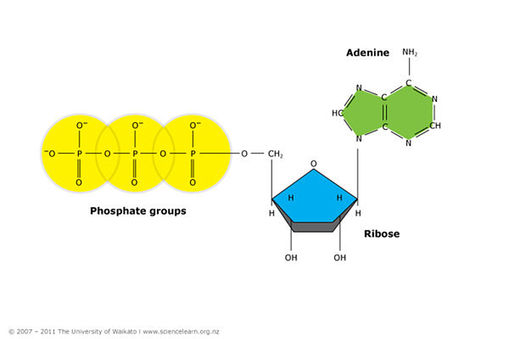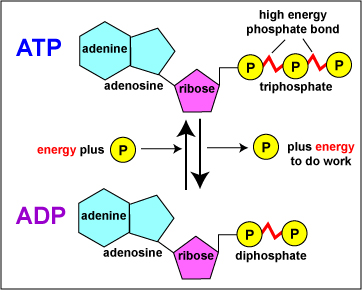Question #af23d
1 Answer
Dec 11, 2014
Adenosine triphosphate, ATP, is the molecule that provides energy that cells can use. It consists of the nitrogen base adenine, the sugar ribose, and three phosphate groups. When a cell needs energy, the bond between the second and third phosphate groups on a molecule of ATP is broken, releasing energy and a phosphate group, and forming adenosine diphosphate, ADP. During cellular respiration, catabolism, and/or the light reactions of photosynthesis, the ADP uses the energy released to combine with a third phosphate group, reforming ATP.
ATP Cycle:
ATP
ADP + P + Energy
The first diagram shows the structure of ATP and the second shows the ATP cycle.



